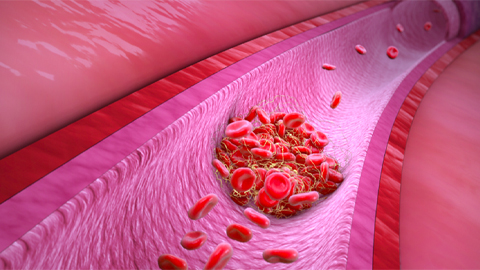Tension between structured complexes and disordered assemblies
How are the many metabolic pathways and biochemical functions of cells spatially organized? In his early ideas of the organization of cells, Edmund Wilson stated that cells were packed with liquid (and by definition disordered) coacervates. Think oil droplets in vinegar. Then, membrane-bound organelles and structured complexes were discovered and took over the narrative thanks to the flourishing discipline of structural biology.
Recently, coacervates have found their way back into the narrative and now are known as membraneless organelles or biomolecular condensates. They compartmentalize cells extensively without membranes, and phase separation shapes many fundamental biological processes. Consequently, dysregulation of phase separation can result in disease. But the pendulum has swung back too far, and protein disorder now often is described as a necessary key ingredient for phase separation.
The highly structured complexes in and internal structure of biomolecular condensates are not getting the attention they deserve. In our theme, we will highlight the spectrum between ordered molecular machines with precise stoichiometry and nonstoichiometric condensates, the latter of which can be disordered completely or have a more defined network structure. Both are necessary and shape functions in our cells.
Keywords: molecular mechanisms, structural biology, biophysics, soft matter physics
Who should attend: everyone who likes molecular mechanisms and is not afraid of a bit of disorder
Theme song: Anything by Rage Against the Machine — or the Droplettes (just kidding)
This session is powered by vinaigrette and other immiscible fluids.
Talks
- In situ structural analysis of the nuclear pore complex — Martin Beck, Max Planck Institute of Biophysics
- Molecular-scale structure of a high-curvature membrane — Adam Frost, University of California, San Francisco
- Structure and function of DNA transposition assemblies — Orsolya Barabas, University of Geneva
- Structural adventures in bacterial protein secretion and motility — Susan Lea, National Institutes of Health
- Building the microtubule cytoskeleton via phase transitions — Sabine Petry, Princeton University
- Structured and disordered proteins collaborate to drive membrane remodeling — Jeanne Stachowiak, University of Texas at Austin
- Understanding how oncogenic fusion proteins drive aberrant gene expression through phase separation — Richard Kriwacki, St. Jude Children’s Research Hospital
- Decoding plasticity of the dark proteome — Edward Lemke, Johannes Gutenberg University and Institute of Molecular Biology
- Phase behavior of intrinsically disordered prionlike domains — Tanja Mittag, St. Jude Children’s Research Hospital
- Regulation of translation and deadenylation via biomolecular condensates — Julie Forman–Kay, Hospital for Sick Children
- Polyubiquitin effects on phase transitions of shuttle protein UBQLN2 — Carlos Castañeda, Syracuse University
- The role of phase transitions in transcription — Ibrahim Cissé, California Institute of Technology
Learn more
Check out all ten thematic symposia planned for the 2022 ASBMB annual meeting:
Enjoy reading ASBMB Today?
Become a member to receive the print edition monthly and the digital edition weekly.
Learn moreFeatured jobs
from the ASBMB career center
Get the latest from ASBMB Today
Enter your email address, and we’ll send you a weekly email with recent articles, interviews and more.
Latest in Science
Science highlights or most popular articles
Universal tool for tracking cell-to-cell interactions
A team of researchers has developed LIPSTIC, which can lay the groundwork for a dynamic map tracking physical interactions between different cells — the elusive cellular interactome.

Weedy rice gets competitive boost from its wild neighbors
Rice feeds the world. But researchers have found that a look-alike weed has many ways of getting ahead.

From the journals: JLR
A “T” makes a difference in blood clotting. High cholesterol: two screens are better than one. Biomarkers for cardiovascular risk. Statin-induced changes to the HDL lipidome. Read about recent papers on these topics.

Decoding microglial language
Emory University scientists characterize extracellular vesicles that facilitate intercellular communication.

What is metabolism?
A biochemist explains how different people convert energy differently – and why that matters for your health.

What’s next in the Ozempic era?
Diabetes, weight loss and now heart health: A new family of drugs is changing the way scientists are thinking about obesity — and more uses are on the horizon.


